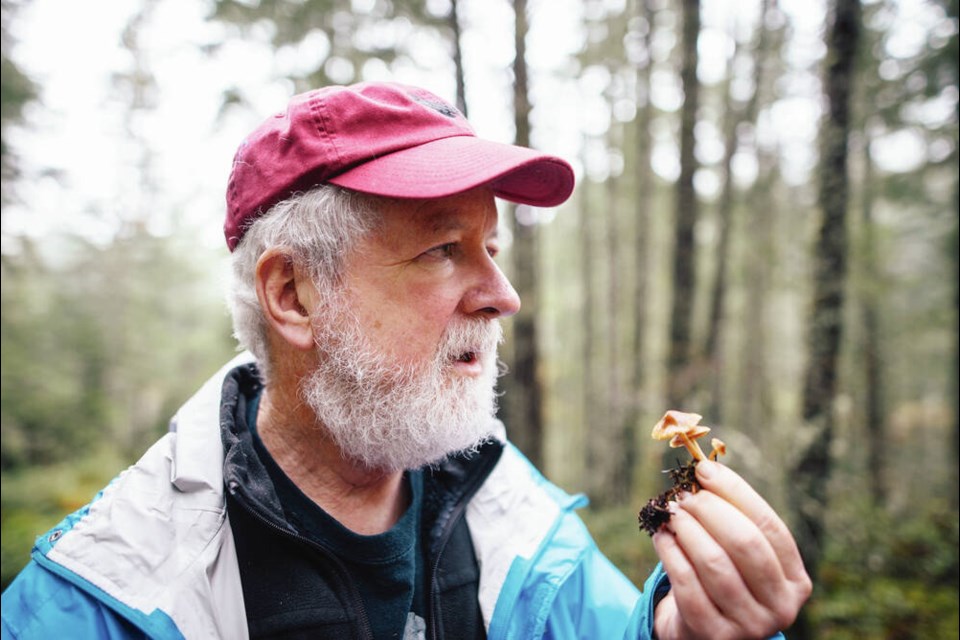I had casually observed fungi before — on lawns, stuck on neighbourhood trees and in neat fairy rings in parks.
But it was the first time I consciously went looking.
For about three kilometres, I followed the winding trail leading to the Sooke Potholes, scanning the forest for fungi.
Nothing.
I wondered if the long drought had delayed the mushroom sprout.
And then it hit me.
I got off the trail, walked softly into the Âunderbrush for several hundred yards and just stood still, Âabsorbing the subtle sounds of a light wind in the Âconifers and shedding maples, and the patter of rain on dried ferns and leaves.
After several moments, I opened my eyes — and mushrooms were all around me.
To the right on a long-fallen log, a cascade of ÂGoldgill Navelcap, so delicate and bright in contrast to its rotting host.
Under my feet, a glistening red-hot milk cap eight inches across in striking crimson hidden among dried ferns and fallen leaves.
A few steps further on and I’m eyeball level with a single mycena, likely the brown bonnet — a tiny thing with translucent, spotted cap perched on a thin stem and sprouting so proudly from a mossy cedar limb.
A Zen moment, for sure.
Over the next several hours, I found about a dozen different mushrooms nestled along mossy boulders and jutting from stumps and logs.
I wouldn’t have known any of them had I not recently come across the Royal British Columbia ÂMuseum’s new field guide, Mushrooms of British Columbia, by Andy MacKinnon and Kem Luther.
When I contacted MacKinnon that day to talk about the book, he answered his cell on the Wild Pacific Trail near Ucluelet. He was also on the fungi hunt.
“I still encounter that feeling of revelation on Âmushrooming expeditions, and I’ve been at this for decades,” said MacKinnon, a forest ecologist and one of the province’s leading fungi experts
Luther, meanwhile, was leading a walk at Francis King Regional Park, enlightening hobby mycologists about the wonders and mysteries around mushrooms and the important roles they play in our ecosystems.
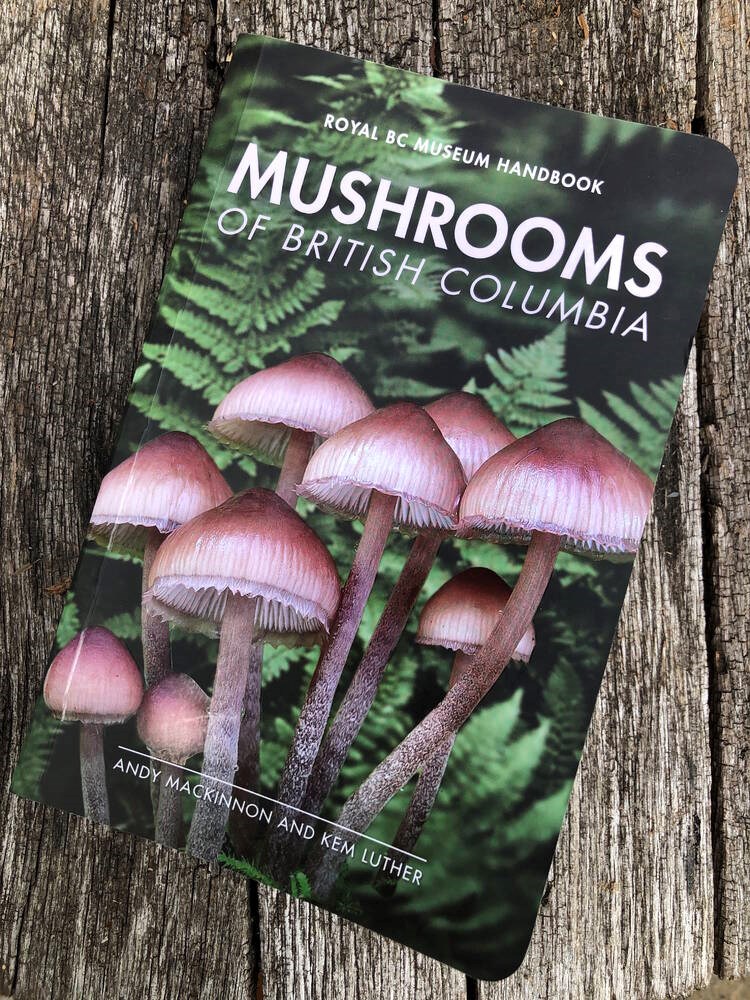 In British Columbia, it’s mushroom season. And we have plenty to hunt, photograph, collect, eat — and some to avoid.
In British Columbia, it’s mushroom season. And we have plenty to hunt, photograph, collect, eat — and some to avoid.
A four-year labour of love for the authors, the field guide is a fascinating look at 350 of the most prolific mushrooms in the province. It’s full of colourful photos — most shot by local mycologists — simplified species descriptions and their habitats, and what you can Âconsume and what might really make you sick and even kill you.
The guide is neatly organized into mushroom groups, from gilled and veined to cups, clubs and corals. And it’s sprinkled with essays that add context through the various groups, like the dreaded spread of the lethal death cap in our urban environments to the so-called magic mushrooms once sought only for a high and now being used to treat serious afflictions such as post-Âtraumatic stress disorder, addictions and depression.
But Mushrooms of British Columbia, incredibly, is just the tip of the iceberg when it comes to fungi in the province. A 2017 survey of mushroom species notes there are more than 3,200 species across British Columbia’s 94.5 million hectares — more than any other province. Many haven’t even been identified. And there are many more only visible by a microscope.
The entries in the field guide represent only about 10% of the observed species, although about 800 are mentioned as comparisons in the notes.
“If we did the whole thing, we would need a wheelbarrow to haul it around … and it wouldn’t really be a field guide,” says Luther. “But it’s a good collection for a lot of people.”
So where to begin with such a project?
The Royal saąúĽĘ´«Ă˝ Museum had published smaller guides, in 1952 and 1964, so it was fitting it should embrace the ambitious plan by MacKinnon and Luther, who say so much has changed in what we know about fungi over the past half-century.
The pair relied on their own field research, official saąúĽĘ´«Ă˝ records and inventories of mycologists in every region of the province, piecing together a species list that hikers and collectors would most likely encounter. It was a large supporting cast of noted mycologists, organizers, editors and researchers who supplied field expertise, and more than 60 photographers.
They didn’t organize mushrooms by taxonomic group, rather clumping by overall shape, and they emphasized common names instead of scientific (although they are there). Each of the species is concisely described with an edibility rating.
“Our goal is practical — helping people identify mushrooms,” said MacKinnon. “But we have also tried to capture some of the fun in fungi.”
He noted there are two dozen “diversion” essays that tie the study of mushrooms into the into “a larger and historical social context.”
The guide is already into its second printing after being released in late July.
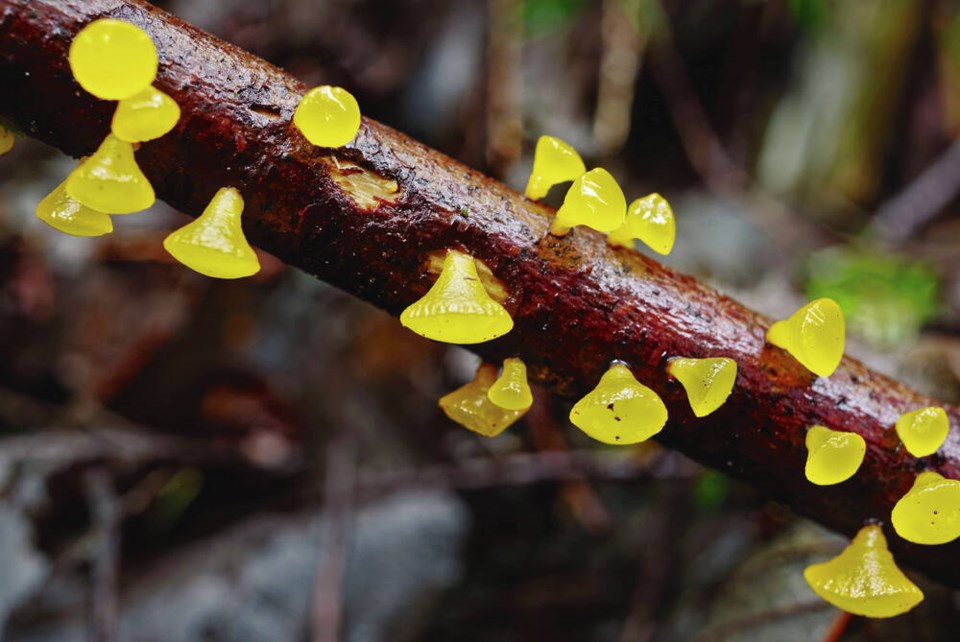
THE BIG WORLD OF FUNGI
It’s estimated there are between two million to four million species of fungus on Earth, including yeasts and moulds, but the majority have not been described in any great detail by mycologists. Fungi are its own kingdom in the big three that make up complex multi-cellular life (plants and animals are the others).
The fungi that produces the fleshy bodies we know as mushroom include only a small percentage of the fungal species, say the authors. “The mushroom is a very partial picture … it would be like describing a berry and thinking you had described the bush it grew on.”
Fungi are masses of long, super-thin filaments called hyphae. In a mushroom, they mass to produce fleshy, fruity reproductive bodies that take forms other than just stems and caps. Some look like dollops of jelly, birds’ nests, and clubs and spears. Others, like truffles, fruit underground.
Some reproduce using asexual spores, others sexual as it is for plants and animals. Most species reproduce in the fall and spring. When compatible mating types come together, hyphal threads join and genetic codes are exchanged.
All play important roles in the ecosystem.
Fungi don’t produce their own nutrition, but act as essential go-betweens in the cycle of life.
Mycorrhizal fungi form associations with trees and other plants and help them grow. A tree sends sugars produced in photosynthesis to its roots for fungi to use. In return, fungi absorbs minerals and water from the soil and delivers them to the roots.
Decomposer mushrooms live on rotting materials and recycle nutrients for new generations of plants.
And they are sprouting everywhere this fall.
Festivals and walks in the woods are well underway as rains quench the soil after a long summer of drought.
“Everyone has their spots, especially for those who put them on the table,” Luther said, noting some are treated like good fishing holes. “I have my own and and anyone who has usually likes to keep it a secret.”
Mushroom-picking is usually restricted in federal and provincial parks and some regional parkland to ensure ecosystem integrity. But provincial Crown land is wide open, and Luther said saąúĽĘ´«Ă˝ has plenty of that.
But some spots are special for research.
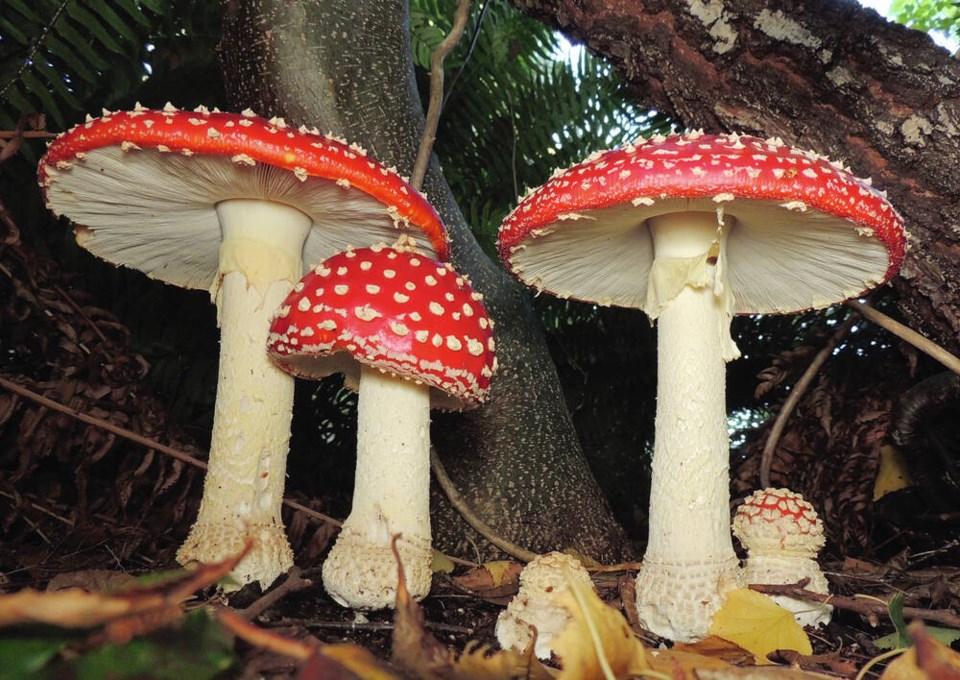
OBSERVATORY HILL
The Dominion Astrophysical Observatory is a landmark in the region. We see it for kilometres all around as the white dome perched alone atop a small mountain in Saanich. Built in 1918, it has been afforded a protection from surrounding development as a buffer against light to aid the telescope — and that has helped to aid one of the world’s largest and longest studies of mushrooms at a single location.
Oluna Ceska, one of the province’s most celebrated mycologists, and her husband, Adolf Ceska, a retired botanist, have been doing detailed mushroom surveys of the hill since 2004. They have documented more than 1,400 mushroom species on the 72-hectare site, which features ecosystems of wet and dry sides with oak, cedar, fir and arbutus trees, rock outcroppings and grassy meadows.
Their studies indicate that mushrooms sprout throughout the year and that some species may fruit one year and not at all the following years. Each year, about 10% of the mushrooms the Ceskas find have never been noted before.
“Their research has shown that only detailed studies that stretch that stretch over all seasons of the year and over many years have any chance of documenting the true fungal diversity of a region,” said Luther.
The Ceskas have contributed more than 6,000 dried collections to the herbarium at the University of British Columbia’s Beaty Biodiversity Museum.
Fellow mycologists have named two mushroom species after the Victoria couple — cortinarius ceskae and inocybe ceskae — and there is a scholarship in their name at UBC.
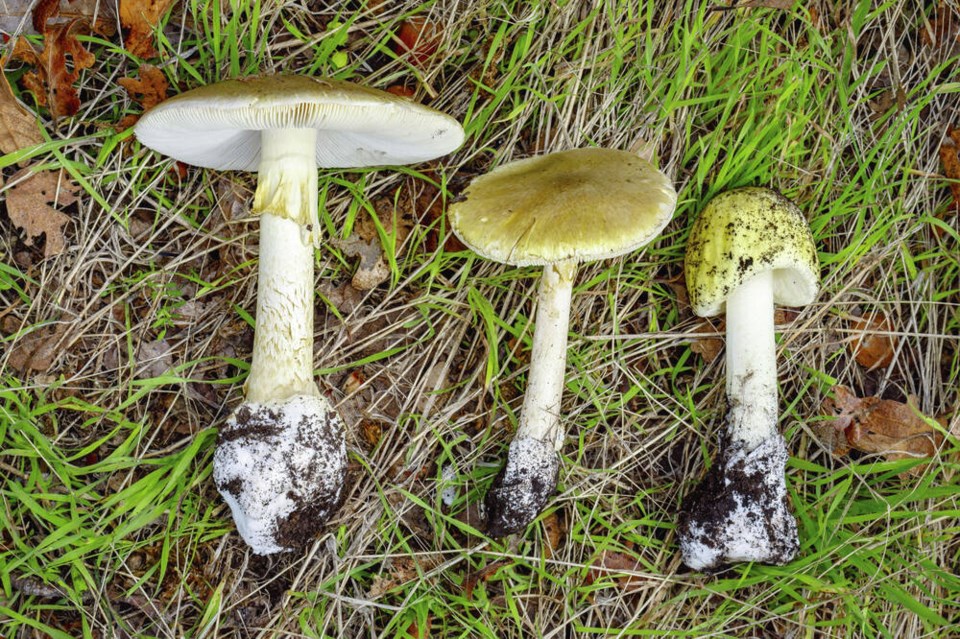
THE DEATH CAP
A three-year-old Victoria child died in 2016 after eating a toxic amanita phalloides from a city boulevard — the first person in British Columbia to fall victim to the death cap mushroom.
The species entered North America in the early 1930s, hitching on the roots of ornamental trees imported by European nurseries to populate boulevards and new developments. It made its way to Oregon and Washington, and was first documented in saąúĽĘ´«Ă˝ in 1997 in a grove of sweet chestnut trees in Mission.
Now they grow randomly in Greater Victoria and Vancouver. Two close calls were reported in 2020 when children had picked them and put the death caps close to their mouths.
It can also be fatal to pets.
Death caps are the deadliest mushroom in the world and are responsible for about 95% of fungus-related deaths worldwide. They are identified by their pale, yellowish-green large caps.
Fatal doses average as little as two ounces.
If you suspect someone has eaten a poisonous mushroom, don’t wait for symptoms - go to the hospital. You can also call the saąúĽĘ´«Ă˝ Drug and Poison Information Centre at 1-800-567-8911 or call 911. Keep a sample of the mushroom.
To get rid of death-cap mushrooms on your property, wear rubber gloves and wash your hands thoroughly afterward. Be sure to remove the bulbous base of the mushrooms, and remove them before mowing the lawn to avoid spread.
Put the mushrooms in the garbage, not in the compost or a recycle bin.
Paul Kroeger, past-president of the Vancouver Mycology Society and a contributor to the field guide, played a big role in tracking and predicting the death cap by linking architecture with street foliage, many of the trees were European hornbeams planted in the 1960s and 1970s.
Luther said death caps are almost impossible to eradicate because they have a wide tolerance for hosts, living in the roots of many European tree species found in cities.
The big worry, said Luther, is their adaptation to native species of trees and a spread into rural areas as happened in California with native oaks.
The worst fears are coming true. In 2016, mycologist Shannon Berch, along with Kroeger and Terrie Finston, found a death cap was living in the roots of a Garry oak in rural Saanich.
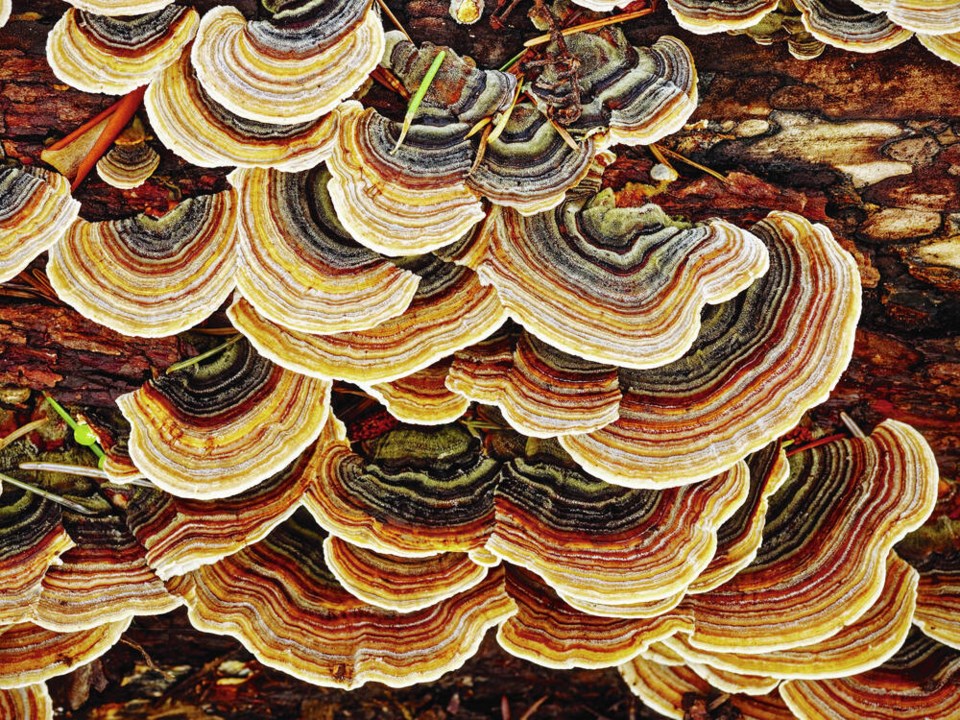
SO WHAT IS POISONOUS?
There are about 250 poisonous mushrooms in North America, but few with the potential lethal punch of a death cap.
“Most saąúĽĘ´«Ă˝ mushrooms, like most saąúĽĘ´«Ă˝ plants, are neither delicious nor poisonous,” said MacKinnon.
The most serious poisonings involve amatoxins found in the death cap, funeral bell and deadly parosol; amino-hexadienoic acid in Smith’s Amanita; and orellanine found in some Cortinarius species. Almost all fatal poisonings cause liver and kidney failure and involve these species.
However, the vast majority of poisonings are likely to be caused by “eating edible species under the wrong circumstances,” such as decayed and infected mushrooms, improper storage, under-cooking or ingesting mushrooms from contaminated locations.
In saąúĽĘ´«Ă˝, the authors have “reliable records” of four people dying from poison mushrooms. “The real risks need to be kept in perspective … most mushroom pickers die from getting lost or seriously injured while picking mushrooms than die from eating them.”
Luther said Canadians have a mycophobia — fear of mushrooms — handed down by the British. He said people in other parts of the world see mushrooms much differently. In eastern Europe and Asia, mushroom- picking is “culturally and ritually important” as a food source and activity.
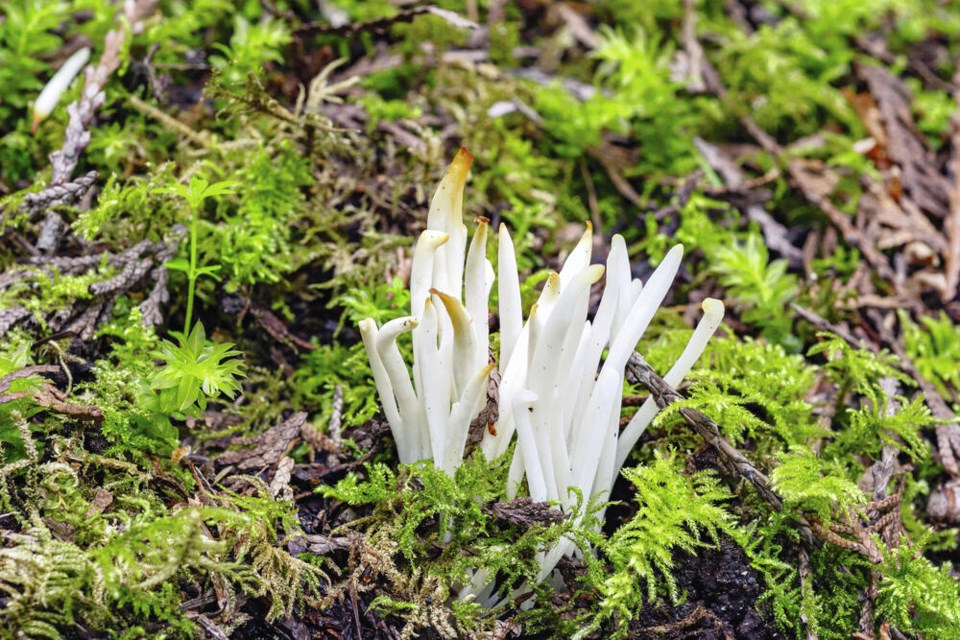
MAGIC CARPET RIDE
At the annual mushroom show in Cordova Bay, collectors show samples of their fungi and observers wander through. When there’s a liberty cap or a wavy cap on display, “there’s usually a few extra eyes on them,” said Luther.
These are the magic ones that caused a great migration of VW vans and those seeking a big high to invade British Columbia each fall for the “shroom pick,” a pilgrimage that still exists today.
These psychoactive pilocybe contain the compound psilocybin, a chemical similar to serotonin and LSD. Symptoms include changes in perception of time and space, laughter and euphoria, and inability to concentrate — or simply, getting high.
The authors note one of the first documented cases of magic mushroom use was in 1965 when RCMP confiscated liberty caps from some UBC students. By the 1970s, the rush was on and conflicts emerged with landowners over trespassing and damage claims. Possession of magic mushrooms was prohibited under the Food and Drug Act in 1974, but was overturned by appeal four years later.
In 1982, however, the Supreme Court ruled possession of dried magic mushrooms was illegal. The law remains to this day, although somewhat relaxed in enforcement, and there are recent challenges to overturn the decision.
“The past five years, there’s been a huge renaissance in interest in magic mushrooms,” said Luther. Researchers are experimenting with psilocybin to treat conditions such as post-traumatic stress disorder, obsessive compulsive disorder and depression, and to support cancer patients with anxiety over dying.
In a small study of adults with major depression, Johns Hopkins Medicine researchers, based in Baltimore, reported last year that two doses of the psychedelic substance psilocybin, given with supportive psychotherapy, produced rapid and large reductions in depressive symptoms, with most participants showing improvement and half of study participants achieving remission through the four-week follow-up.
But keep in mind if you’re out picking, the magic ones are part of the LBM (little brown mushroom) group which are similar in appearance and often grown along side poisonous species.
Paul Kroeger, of the Vancouver Mycological Society, has written extensively on magic mushrooms on the society’s website.
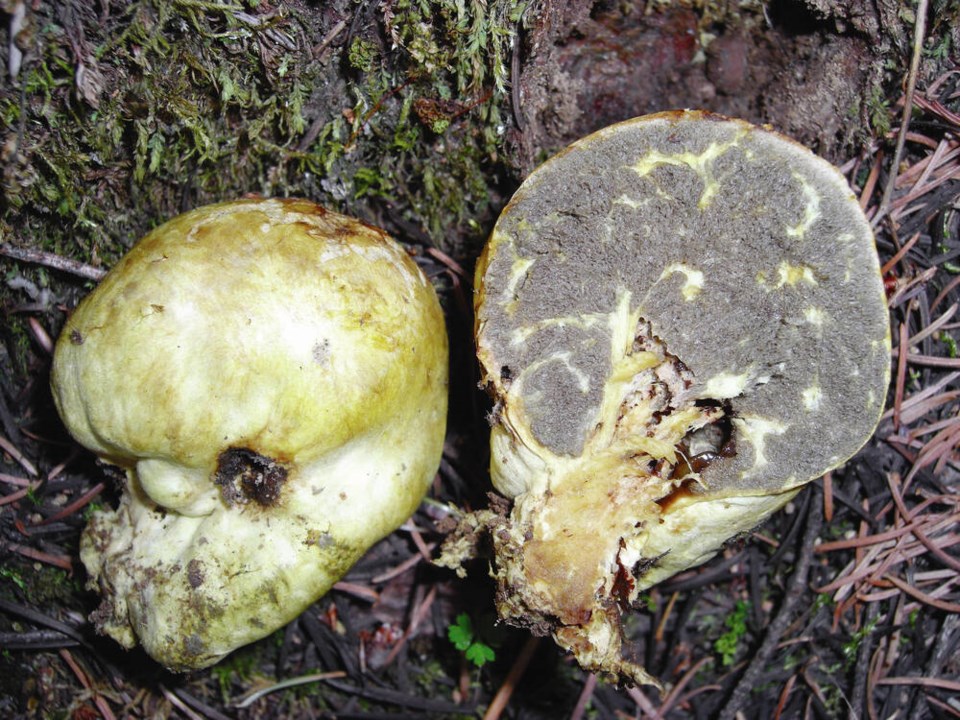
HIDDEN TREASURES
Truffles are considered one of the most expensive foods on the planet, with the most prized — the Italian white — costing up to $4,000 US per kilogram. In 2014, the world’s largest white ruffle weighed in at two kilograms and fetched $61,000 US at auction.
Prized in fine dining for their potent smells and unique tastes (even properties as aphrodisiacs), the truffle is difficult to find because it is usually underground at the base of hosting trees.
Pigs have been sniffing them out in Europe for ages, and dogs are being trained do the same.
In British Columbia and the U.S. Pacific Northwest, there are 350 different species of truffles. Some are edible, others not so much.
But there is a fledgling industry afoot. Three famous Mediterranean species, including the Italian white, are being harvested from oak and hazelnut orchards on the Island and Fraser Valley. Other truffle orchards are being established in the Okanagan.
In coastal saąúĽĘ´«Ă˝, Douglas fir host the most renowned native culinary truffles (western white and black) as well as lesser-knowns that appeal more to small mammals such as chipmunks, deer mice and red squirrels.
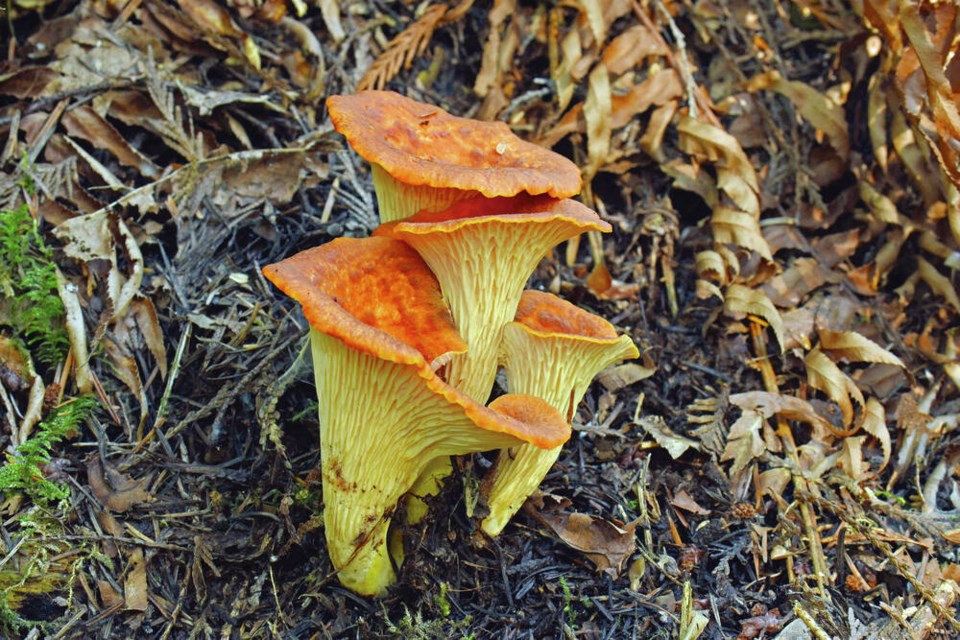
THE INDUSTRY
The value of saąúĽĘ´«Ă˝â€™s commercial wild mushroom industry is unclear, according to the authors. It’s largely unregulated, but a report on the harvest compiled in 1999 showed the pine mushroom — picked extensively on the Island and in the Kootenays — was the province’s most important commercial species, with exports reaching 400,000 kilograms and a value of $45 million.
It’s often exported to Japan where it’s known as matsutake and can sell for $95 per kilogram.
Those numbers are expected to be much higher after 22 years.
Other major exports include chanterelles, King Bolete and morels, and several lesser-known mushrooms such as lobster, western cauliflower and bellybutton hedgehogs.
MacKinnon notes as more trees are logged in the province, mushrooms disappear with them. And even when trees are replanted, it can take 30 to 40 years before mycelial fungus mats are established enough to produce mushrooms.
The medicinal market for mushrooms is also significant, especially from Asia, where some species, including the turkey tail, are used to enhance the immune system and in cancer treatments. Their most effective ingredients are believed to be complex beta-glucan polysaccharides.
The famously preserved Iceman Otzi, discovered in a receding glacier in the Austrian Alps in 1991 and dead for about 5,400 years, carried in his pouch a birch conk, which had a long history of treating worms, stomach ailments and cancer.
